Mayan Astronomy
The Maya were quite accomplished astronomers. Their primary interest, in contrast to "western" astronomers, were Zenial Passages when the Sun crossed over the Maya latitudes. On an annual basis the sun travels to its summer solstice point, or the latitude of 23-1/3 degrees north.
Most of the Maya cities were located south of this latitude, meaning that they could observe the sun directly overhead during the time that the sun was passing over their latitude. This happened twice a year, evenly spaced around the day of solstice.
The Maya could easily determine these dates, because at local noon, they cast no shadow. Zenial passage observations are possible only in the Tropics and were quite unknown to the Spanish conquistadors who descended upon the Yucatan peninsula in the 16th century. The Maya had a god to represented this position of the Sun called the Diving God.
The Maya believed the Earth was flat with four corners. Each corner represented a cardinal direction. Each direction had a color: east-red; north-white; west-black; south-yellow. Green was the center. At each corner, there was a jaguar of a different color that supported the sky. The jaguars were called bacabs. Mayans believed that four jaguars held up the sky.
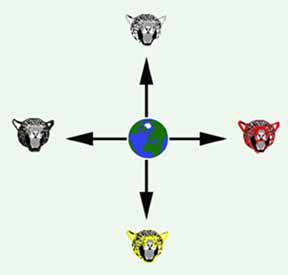
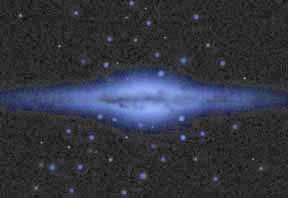
The Milky Wayitself was much venerated by the Maya. They called it the World Tree, which was represented by a tall and majestic flowering tree, the Ceiba. The Milky Way was also called the Wakah Chan. Wak means "Six" or "Erect". Chan or K'an means "Four", "Serpent" or "Sky". The World Tree was erect when Sagittarius was well over the horizon. At this time the Milky Way rose up from the horizon and climbed overhead into the North. The star clouds that form the Milky Way were seen as the tree of life where all life came from.
Near Sagittarius, the center of our galaxy, where the World Tree meets the Ecliptic was given special attention by the Maya. A major element of the World Tree include the Kawak Monster, a giant head with a kin in its forehead.
This monster was also a mountain or witz monster. A sacrificial bowl on its head contains a flint blade representing sacrifice, and the Kimi glyph that represents death. The Ecliptic is sometimes represented as a bar crossing the major axis of the world tree, making a form that is similar to the Christian Cross. On top of the World Tree we find a bird that has been called, the Principal Bird deity, or Itzam Ye. There is also evidence that shows the Sun on the World Tree as it appeared to the Maya at Winter Solstice.
During the months of winter, when the so-called "Winter" Milky Way dominates the sky, it was called the "White Boned Serpent." This part of the Milky Way passed overhead at night during the dry season. It is not brilliant like the star clouds that dominate the sky North of the equator during the months of Summer, but observers at dark locations will easily see the glow. Here the Ecliptic crosses the Milky Way again, near the constellation of Gemini which was the approximate location of the Sun during Summer Solstice. It is possible that the jaws of the White-Boned Serpent were represented by the Kawak monster head.
The Maya portrayed the Ecliptic in their artwork as a Double-Headed Serpent. The ecliptic is the path of the sun in the sky which is marked by the constellations of fixed stars. Here the moon and the planets can be found because they are bound, like the Earth, to the sun.
The constellations on the ecliptic are also called the zodiac. We don't know exactly how fixed constellations on the ecliptic were seen by the Maya, but we have some idea of the order in some parts of the sky. We know there is a scorpion, which we equate with our own constellation of Scorpius.
It has also been found that Gemini appeared to the Maya as a pig or peccary, (a nocturnal animal in the pig family.) Some other constellations on the ecliptic are identified as a jaguar, at least one serpent, a bat, a turtle, a xoc monster--that is, shark, or a sea monster.
The Pleiades were seen as the tail of the rattlesnake. they called it "Tz'ab."
Spiritually, Mayans seem to have thought of the Milky Way as the mystic road along which souls walk into the Underworld. Crossing the Milky Way at the constellation Scorpio is the ecliptic, the apparent path of the sun, moon, and planets as they move against the background of stars.
Mayans tracked their creation stories in relation to the movement of the stars across the heavens. They believed that the point at which the Milky way appeared as a vertical band in the night sky represented the moment of creation.
Mayans used their astronomical knowledge to predict future human events. In one of the ancient Mayan books, Mars is represented by a series of pictures of a long-nosed beast shown descending to varying depths from a sky band.
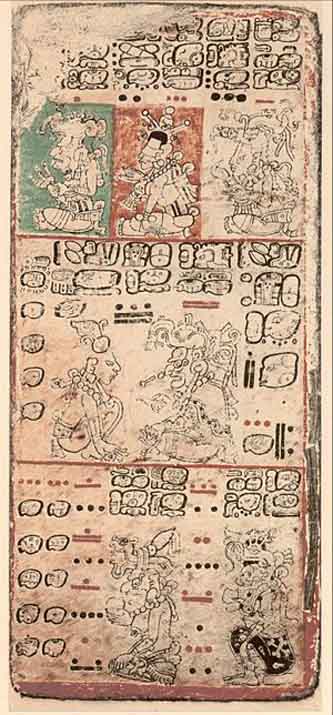
Mayan Codices - The Dresden Codex
Mayan Calendars Haab', Tzolk'in and Lo.
April 5, 2001 - FOX News
Approximately one millennium before Archbishop Usher of Armagh concluded that creation occurred at 4004 B.C., the Mayans had calculated the cosmos was 90 million years old.
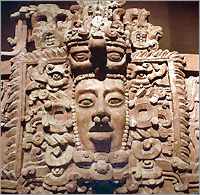
Like other pre-Columbian civilizations, the Maya had a profound knowledge of the sky. Their priests recorded astronomical observations and passed them down from generation to generation. The result was an extremely accurate calendar that predicted the coming of eclipses and the revolutions of Venus to an error of one day in 6,000 years.
Only a handful of the parchments that chronicle this knowledge survived the zealous bonfires of the missionaries; those that did are now called codices. In one, for example, Venus is represented as a figure with two masks, symbolizing its appearance in the early morning and evening.
The calendar itself was divided into cycles 3 million years long, subdivided into units of 20 years, 400, 8,000 and 158,000 years. There were also subunits for marking the death and rebirth of the sun and fire. Rituals punctuated the cycles and acted like the needles of a clock, marking the passage of time.
It is difficult to talk of Mayan astronomy itself because it was truly part of a greater discipline: religion. The Mayan ball game is the perfect embodiment of this fact. Transmitted from previous local civilizations as far back as 3,000 B.C., it consisted in using hips, legs and the head to get a ball across a line or through a hoop.
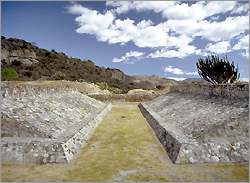
Different symbols are brought together in the ball game. Archaeologists think the ball symbolized the sun and the game re-enacted its apparent orbit around the Earth. The sun was worshipped as a god and by playing the game, one became somewhat akin to the Sun-God. But the game might also have signaled a changing season, so that it served a purpose as well. Since agrarian societies require a timekeeper to regulate agricultural tasks, these rituals were vital to the Mayan society's survival.
Pre-Columbian ball courts and other buildings functioned both as religious temples and observatories. The architecture was used to define orientations and mark the passage of time. When Orionappeared through a designated hole or the sun shone directly on a specific spot, it meant spring was near. The pyramid of El Tajín in Mexico, for example, is made up of 365 niches, one for each day of the year. A niche here is the equivalent of a box in one of our calendars.
Smaller calendars were sculpted into stone and gold. It is no wonder then that artists were highly regarded and given special status in Mayan society. Without artists there would be no calendars, no way to tell time, bad crops and eventually famine. For the Maya, astronomy was enmeshed into one thick fabric with art, agriculture and religion.